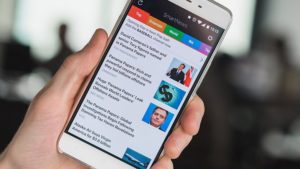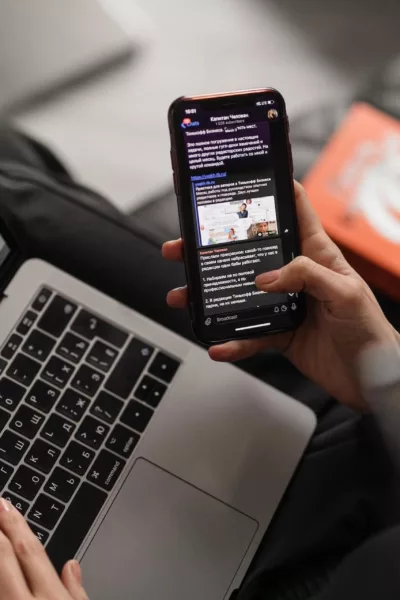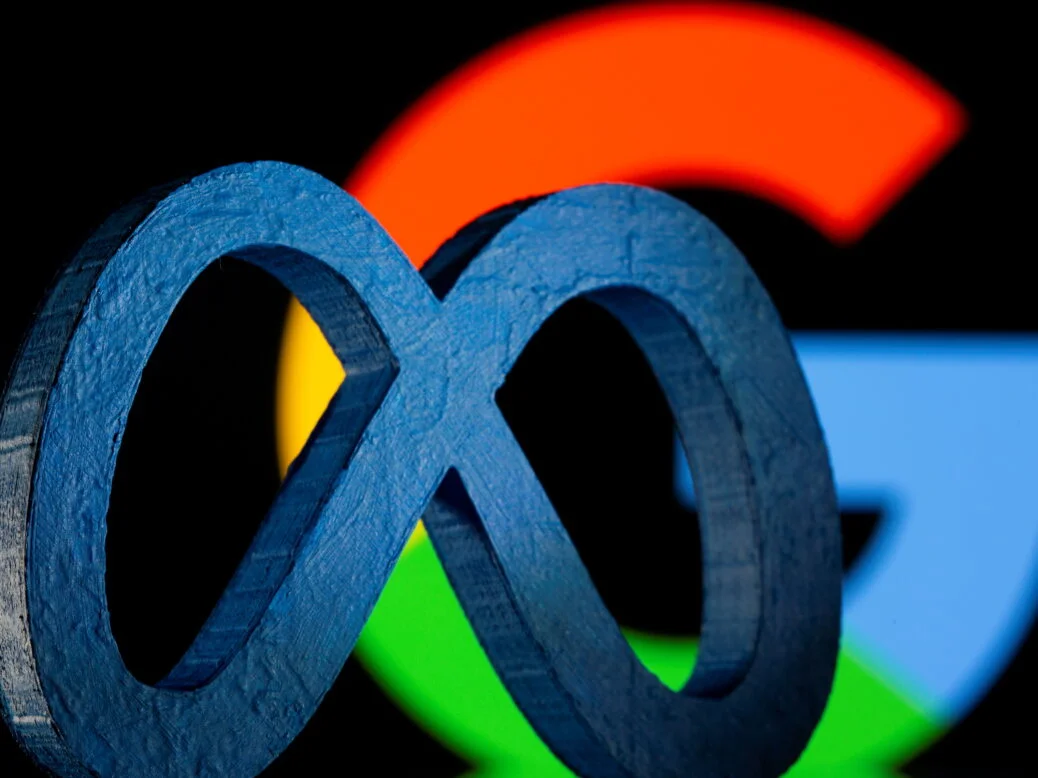When Rich Jaroslovsky was hired to work for the news curation app SmartNews a little over four years ago, his new bosses suggested a job title that he found curious: chief journalist. “I chuckled a little and explained that in the U.S. that’s not a common title,” he recalled in an interview (SmartNews got its start and is headquartered in Japan). “A more common title would be editor in chief. And their answer was, ‘If you want to be editor in chief, that’s fine. But if you’re editor in chief, that implies you’re editing and making story selections, and that’s not what SmartNews is about.’ And when I thought about it for a moment, I said, ‘You’re absolutely right.’”
This distinction — that the app’s story selections are largely driven by algorithms, not hand-picked by humans — has grown increasingly important in recent months as publishers have taken a renewed interest in news apps.
This interest has been driven by their increased weariness with Facebook. Back in January, the social media giant announced that it was changing its Newsfeed algorithm so it would favor posts produced by friends and family; as a result of these changes, reach for publisher pages was expected to decline.
Since then, several publishers have documented a significant decline in Facebook referral traffic, with at least two publishers — LittleThings and Render Media — announcing their closure as a result of the algorithm changes. Publishers have been scrambling to diversify their traffic in order to become less reliant on Facebook. Many have placed increased emphasis on building out email subscriptions and their presences on other social platforms.
The focus on diversification has resulted in collaborations with news curation apps. Around the same time Facebook made its Newsfeed announcement, some publishers began to report traffic booms from Apple News, and several news orgs have worked closely with the company as it’s rolled out new ad products and native video features. Meanwhile, a report from the Reuters Institute for the Study of Journalism found that, for the first time, use of Facebook for news consumption has declined.
SmartNews, which originated as a Japanese app before launching in the U.S. a few years ago, has seen increased interest from both consumers and publishers. It recently announced it had surpassed 10 million monthly users. Jaroslovsky, who helped launch the original WSJ.com back in the 90s and is one of the co-founders of the Online News Association, is responsible, in part, for interfacing with the 300 publishers that want to partner with the app. “Facebook has changed the rules of the game,” he said. “I think a lot of publishers are feeling a little bit burned by that.”
Apps like SmartNews, because they don’t seek out user generated content and work almost exclusively with publishers, argue that their incentives are more aligned with those publishers. “If our publisher partners do well, we will do well, and if we do well, they will do well,” said Jaroslovsky.
So how do publishers work with SmartNews, and what benefits does it have to offer them? Well, in most cases, the app defaults to a publisher’s mobile website, so it can monetize any traffic the app sends directly. Users are also given the choice of reading the article in “smartview,” which is a stripped-down, faster-loading version of the article that’s hosted natively within the app. “Publishers that partner with us can place their own advertising on the smartview of their stories with no rev share back to us,” said Jaroslovsky. “They keep 100% of the revenues.” And publishers don’t need to divert sales force resources in order to place ads in SmartNews; they can simply plug it into their already-existing ad tech so that the ads rendering on their mobile websites also show up within the app.
Anecdotally, Jaroslovsky’s been told by publishing partners that SmartNews is becoming a growing referral source. “I’m hearing more and more from publishers that say things like, ‘Hey, you guys are our fourth biggest source of traffic.’” And because the app is algorithm-driven, the stories it sends the most traffic to aren’t always the same articles that attract the most social media shares. Vincent Chang, senior manager of culture and community at SmartNews, described these stories as “the hidden gems that are not trending on social, but are super high quality stories that deserve to have a wider audience.”
This algorithmic approach also protects SmartNews users from being exposed to fake news. Part of the reason that false stories have proliferated on the web is because they’ve been widely shared by unsuspecting users on social media sites. SmartNews, however, doesn’t rely on user generated content and vets any publishers that are included in its app. “We don’t just willy nilly link to anyone on the web,” said Jaroslovsky. “We’re not just shooting people off into the ozone.”
Of course, the app isn’t optimized for all kinds of content delivery. News curation apps have struggled with serving up a diet of local news, especially given that many small publishers still aren’t well optimized for the mobile web and can’t afford staff to focus on platform partnerships. Jaroslovsky noted that a user can subscribe to region-based channels within the app, but he admitted that he wished that this feature was more prominent within the app. “The thing I want to do is figure out ways to let more of our users know this feature exists because it does support local news.”
During breaking news situations, when a local news outlet is most likely to have the best on-the-ground information, the app will often link to it. “After the Pulse nightclub shooting, the best coverage, and the coverage that surfaced on our channel, was from a local news source,” said Jaroslovsky. “The publisher saw a huge spike in traffic from us.”
While much of SmartNews is driven by algorithmic selection, Jaroslovsky and his team do play a role in the app’s push notifications. It sends out two types; the first kind is sent out, like clockwork, four times a day and is optimized for a user’s interests. It used to be that these types of push notifications were algorithmically chosen, but Jaroslovsky noticed that the algorithm sometimes picked stories that weren’t appropriate candidates for push notifications. So his team experimented with having humans select all the stories to be pushed, but this led to a decline in open rates. “We then went to a system whereby we would have the algorithm nominate candidates for a scheduled push, but a human reviews the algorithm’s suggestions from a list of about five or so and then selects from the pushes. And guess what, the machine outperformed the human, but the combination of the human and the machine outperformed the machine by itself.”
Content from our partners
The second kind of push notification is for breaking news, and these notifications are left up entirely to the subjective judgement of Jaroslovsky’s team. “We are watching the news constantly, and we have a team both [in San Francisco] and New York,” he said. “When we see something or start getting stories from our partners about some breaking news event, we will make a determination about whether this is something that’s worth a breaking push to everybody. That process is still human judgement, and I would argue it should be.”
One thing I wondered about was how SmartNews was reacting to the rise of subscription business models. Platforms like Facebook and Google have been testing out tools that will help publishers convert casual readers into paying subscribers. Was SmartNews adapting?
Jaroslovsky couldn’t cite any current subscription features, though he hinted that there were plans in the works. He recognized that hitting a paywall is “not a great user experience,” and that there does need to be a solution. “Paywall content publishers who like the traffic they get from us and want more, they are the ones that tend to be the most persistent, saying, ‘When are you going to come up with something to show us some love?’ That’s definitely an area that we know we need to come up with good solutions for. We’re not there yet, but we’ll get there.”












